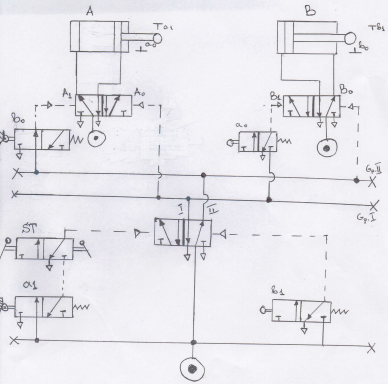Reference no: EM131268778
Chemical Reactor Engineering - Department of Chemical and Natural Gas Engineering Project
Concepts: Evaluation of Reactor Volume (CSTR and PFR) for a Gas Phase Reaction.
Non-textbook problem:
Consider the irreversible gas-phase reaction for production of ethyl benzene from benzene and ethylene, occurring under isothermal and isobaric conditions:

Assume the rate law can be written as an elementary rate law, using the stoichiometric equation given above. The kinetic rate constant can be determined from the following Arrhenius parameters for this particular reaction:
Pre-exponential factor A = 1.0 x 106 (units of k and A are m3/kg mol-second)
Activation energy = 22,500 kcal/kg mol
This reaction is typically carried out in a PFR at a temperature T0 = 400°C and P0 = 20 atm. The feed rates and conditions are as follows--
FT0 = 100 kg moles/hour;
Molar ratio of benzene to ethylene in feed is 4:1 (no inerts nor product C are present in the feed)
CA0 = 0.28 kg mol/m3
CB0 = 0.07 kg mol/m3
Expected conversion in one PFR reactor = 50% (single pass conversion)
a. Determine the PFR volume required for conversion of the benzene at four to five different temperatures over the range of 300 to 400°C. Show your complete calculations, including how you are solving the PFR differential equation, for at least one case. The intermediate and final values for the remaining cases can be documented in a table or similar format.
b. Reactors that operate at 400°C and a high pressure may be constructed with more expensive metals that carbon or stainless steel, due to the significant decline in the yield stress of steel between 350 and 400°C. Using a relative cost ranking for applicable metals of 1 for carbon steel, 2 for stainless steel (carbon and stainless can be used only at 350 C or less) and 6 for nickel alloy (can be used to 400 °C), prepare a brief description regarding choice of a larger volume reactor of lower strength metal, used at lower temperature, versus a smaller volume reactor made of higher strength metal. Back up you statement with a graph that represents the relationships between relative capital cost, reactor volume, and operating temperature.
EXTRA CREDIT ASSIGNMENT-
Using the Ergun parameter value calculated in class example 6 (α = 1.66 x 10-2), consider the above reaction as occurring instead in a packed-bed reactor, where pressure varies with distance along the reactor, starting with P0 = 20 atm (still isothermal but now NOT isobaric). Prepare a MATLAB solution using this Ergun parameter value and the reaction parameters given for the ethyl benzene reaction above. The primary result of interest is the pressure profile in the PFR reactor with catalyst weight (distance along the reactor axis).